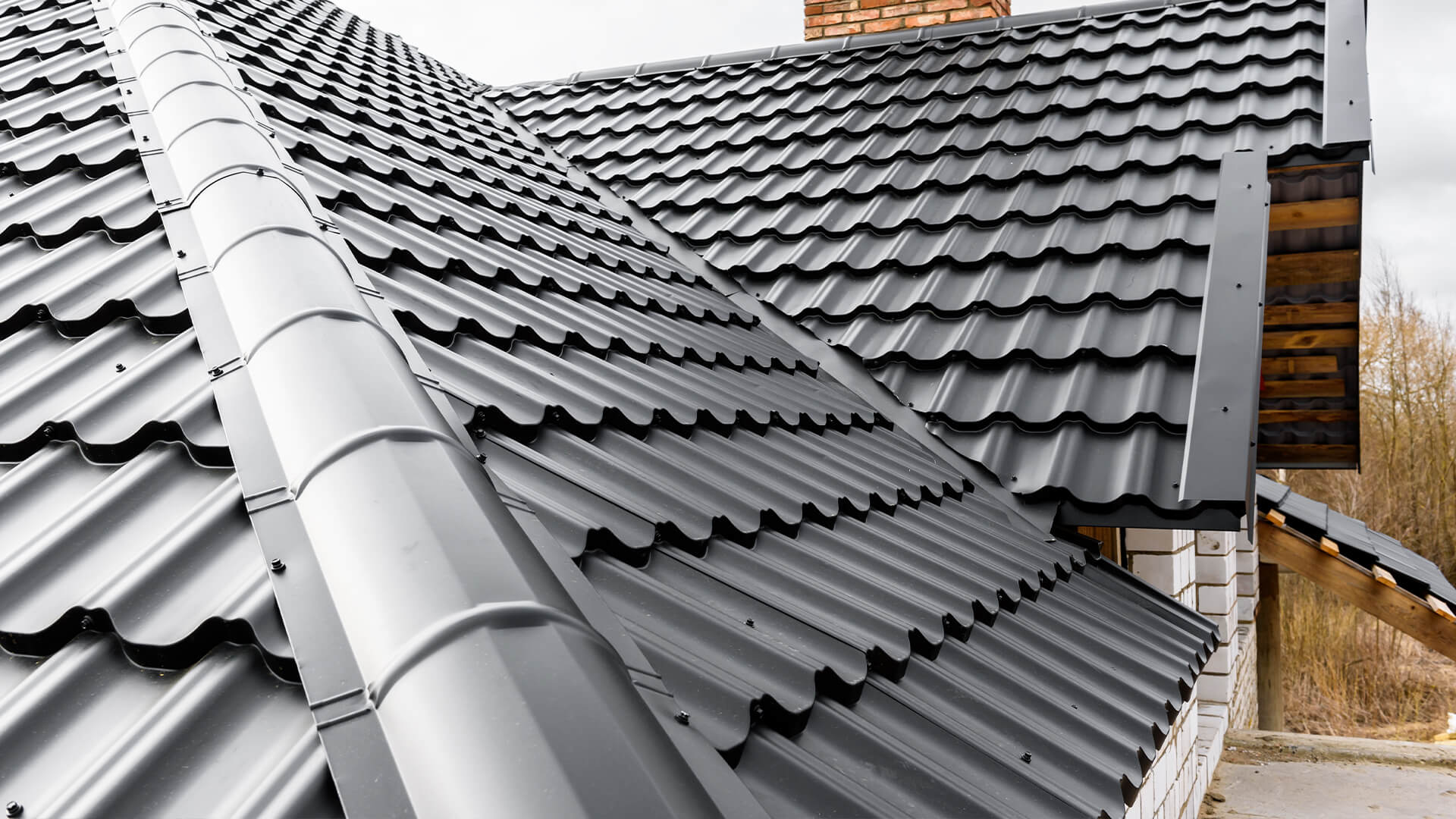A Comprehensive Take A Look At Roofing Companies Gainesville Locals Recommend
Wiki Article
Finest Practices for Ensuring Proper Roof Air Flow
Making certain proper roof covering ventilation is essential for the long life and efficiency of a roof. A balanced consumption and exhaust vent ratio, commonly 1:300, plays a critical role, with consumption vents preferably positioned at the lower edge of the roofing system for great air entrance and exhaust vents at the top for warm air exit. Normal examinations to identify clogs and preserve clear air movement are critical. Maintaining insulation away from vents is crucial to prevent air movement limitation. Comprehending these fundamental elements establishes the phase for more in-depth insights into installment and upkeep techniques that can considerably boost your roof system's performance.Understand Ventilation Fundamentals
Effectively understanding ventilation essentials is important for making sure the durability and performance of roof. Reliable ventilation reduces wetness build-up and temperature level extremes in the attic room, both of which can bring about considerable architectural damages with time. A well-ventilated roof helps in avoiding common issues such as mold growth, wood rot, and ice dams, which can compromise the integrity of the roof covering materials and the underlying frameworks.The main goal of ventilation is to promote the motion of air, enabling a constant exchange in between the exterior and interior atmospheres. This balance is accomplished via a mix of consumption and exhaust vents that interact to keep optimum air flow. Intake vents, generally situated along the soffits or eaves, permit fresh air to enter the attic room area, while exhaust vents, commonly situated at or near the roofing ridge, allow hot, moist air to get away.
Trick elements influencing the performance of roofing air flow consist of proper placement, sufficient sizing, and making sure that both consumption and exhaust vents are unblocked. Regular examination and upkeep are important to identify possible obstructions, damage, or inadequacies in the air flow system, thus securing the roofing system's performance and sturdiness.
Sorts Of Roofing Vents
Roofing system vents play an essential function in maintaining reliable attic room air flow and, by extension, the overall health and wellness of the roof. Various sorts of roof covering vents are readily available, each with distinct benefits tailored to certain roofing requirements. Ridge vents, as an example, are installed along the roofing system's top, permitting warm, damp air to get away from the attic room. They provide constant ventilation and mix seamlessly with the roofline, making them both reliable and cosmetically pleasing.
Soffit vents are set up under the eaves and work in tandem with roof vents to guarantee a balanced consumption and exhaust system. By enabling cooler air to enter from below, soffit vents promote the expulsion of hot air via upper vents. Gable vents, situated on the exterior wall surfaces of the attic room, offer an additional effective option, especially in homes with saddleback roofs.
Examine Your Existing Air Flow

Next, consider the age and problem of your roofing products and ventilation components. Older systems might not adhere to present building codes or might have worn away over time, lowering their effectiveness. Conduct a detailed examination to determine any kind of indications of wear and tear, such as rust, damage, or gaps that might endanger the system's performance.
In addition, gauge the attic room temperature level and moisture degrees. High temperatures and moisture can indicate insufficient ventilation.
Installation Best Practices
Efficient installment of roofing ventilation systems is vital for ensuring ideal performance and longevity. Appropriate installment starts with recognizing the certain air flow needs of the roof and the building it covers. This involves determining the right proportion of consumption to wear down vents, normally adhering to the 1:300 regulation, which stipulates one square foot of ventilation for every single 300 square feet of attic floor space.
The placement of vents is just as important. Intake vents need to be mounted at the roofing's lower side, frequently in the soffits, to permit great air to enter. Exhaust vents, on the other hand, ought to be mounted near or at the roofing's peak to help with the exit of cozy, moist air. This develops an all-natural air flow that aids preserve temperature and dampness balance within the attic room space.
Seal all vent links meticulously to prevent air leakages and possible water infiltration. Use high-quality products and adhere to manufacturer standards to make certain toughness and effectiveness. Furthermore, incorporating ridge vents with baffles can considerably enhance air flow effectiveness by preventing wind-driven rainfall and snow from entering the attic.
Ultimately, precise installation of roof ventilation systems minimizes possible concerns such as mold and mildew development, ice dams, and architectural damage, making certain the roof covering's integrity and the structure's general wellness.
Routine Maintenance Tips
Consistency in upkeep techniques is basic to guaranteeing the long-term performance of roof covering ventilation systems. Throughout these examinations, guarantee that vents are complimentary of debris, nests, and various other blockages visit our website that could restrain air flow.
Cleaning the vents is an additional important task. Make use of a soft brush or a vacuum to get rid of dirt and debris from consumption and exhaust vents. Beware not to damage the air vent screens or louvers during the process. In addition, examine the attic room space for any type of indicators of water damages, which might jeopardize the integrity of the roof.
Appropriate insulation is equally vital. Ensure that attic insulation does not obstruct the vents, as this can seriously restrict air flow. If any insulation has actually moved or settled, reposition or change it to maintain an effective barrier.
Finally, change any harmed or missing out on components immediately. Broken vents, fractured shingles, or scrubby blinking can all add to poor air flow and should be dealt with find more info without delay. Regular maintenance makes sure that the roof covering ventilation system works efficiently, consequently prolonging the life expectancy of the roofing itself.
Verdict
Guaranteeing proper roof ventilation is critical for maintaining the performance and resilience of a roof system. Adherence to the 1:300 intake and exhaust vent proportion, paired with the calculated placement of vents, is vital. Normal semiannual assessments, debris cleaning, and guaranteeing insulation does not obstruct airflow are critical practices. Carrying out these finest practices will certainly promote a well-ventilated roof system, thus mitigating possible concerns associated with moisture build-up and excessive heat, inevitably lengthening the roofing's lifespan.A balanced consumption and exhaust air vent ratio, typically 1:300, plays an essential duty, with intake vents preferably positioned at the reduced edge of the roofing system for amazing air entrance and exhaust vents at the peak for cozy air departure. Intake vents, generally situated along the soffits or eaves, allow fresh air to go into the attic space, while exhaust vents, commonly situated at or near the roof covering ridge, make it possible for hot, humid air to run away.
Soffit vents are mounted under the eaves and job in tandem with roof vents to guarantee a well balanced intake and exhaust system. By permitting cooler air to enter from below, soffit vents help with the expulsion of warm air with top vents. Adherence to the 1:300 consumption and exhaust vent proportion, coupled with the calculated positioning of vents, why not find out more is essential.
Report this wiki page